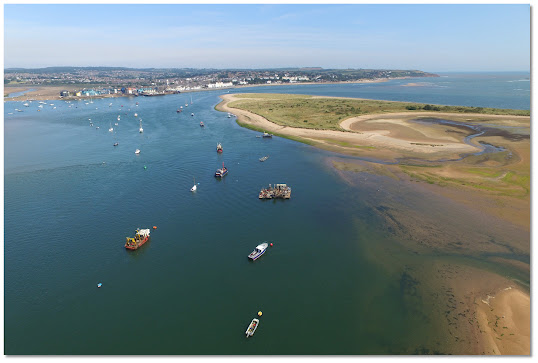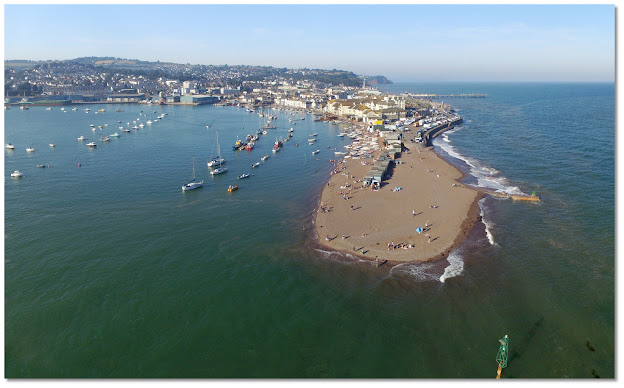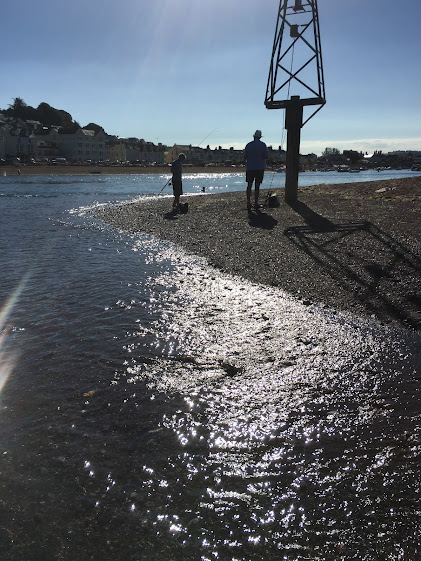PicoMicroYacht has almost completed voyaging from the Thames Estuary to Cornwall. There are just a few gaps to fill. This summer I completed one of them in Devon, between Exmouth and Teignmouth.
This voyage takes you out of Exmouth Harbour and down the Devon Coast past Dawlish.
For a small dinghy without motorised power, the voyage presents several challenges, which I enjoyed overcoming, PicoMicroYacht being well suited for this type of voyage.
The Exe Estuary entrance - from eOceanic
One is launching a boat, which I did on the west side of the Estuary. I found on Google Maps a launching site just south of Starcross, by a village called Cockwood. There is a small tidal lagoon separated from the estuary by a railway embankment and it is possible to exit the lagoon through a tunnel. I got there early and the lagoon was empty, but I realised I could tow PicoMicroyacht across a muddy track and out through the tunnel onto a beach to launch.
Going through the tunnel. The mizzern mast, already put up, was just low enough to get through.
The next challenge was to leave the Exmouth Estuary against the tide, since this would give me more time to take advantage of a south flowing tide in the sea, To start with I rowed around the Bight, shown below, keeping close to the shore (left to right).
The Bight, to the south of the Exmouth Estuary - from eOceanic.
In the actual entrance the tide was ripping at great pace. I kept really close to the shore, with my starboard blade about two feet away. This seemed to do the trick and get me out of the estuary, rounding Warren Point.
Outside the estuary and to the south are treacherous sandbanks. Normally these are avoided and the channel takes you north of these sandbanks far to the east. However, it was very calm and the tide was high enough for me to head south, cutting many miles off my journey. I went over the Pole Sands and the aptly named Monster Sands.
Google Earth shows how wave break around the entrance the Exe Estuary, the sandbanks very harzardous to shipping.
Eventually I was free from worry about being over sandbanks and heading south. It is along this coast that the railway, designed by Isambard Kingdom Brunel, hugs the shore. I could see the trains in the distance going up and down, looking like a model railway.
It was a sunny July day, the sea sparkling blue, and good progress was made.
Once in the harbour I was able to find a slipway close to the lifeboat station.
This voyage, some eight miles, had gone without incident, mainly due to the calm sea and slight winds.
Some illustrations in this post are from eOceanic, designed and produced by sailors for sailors
https://eoceanic.com/sailing/harbours/522/the_bight











No comments:
Post a Comment